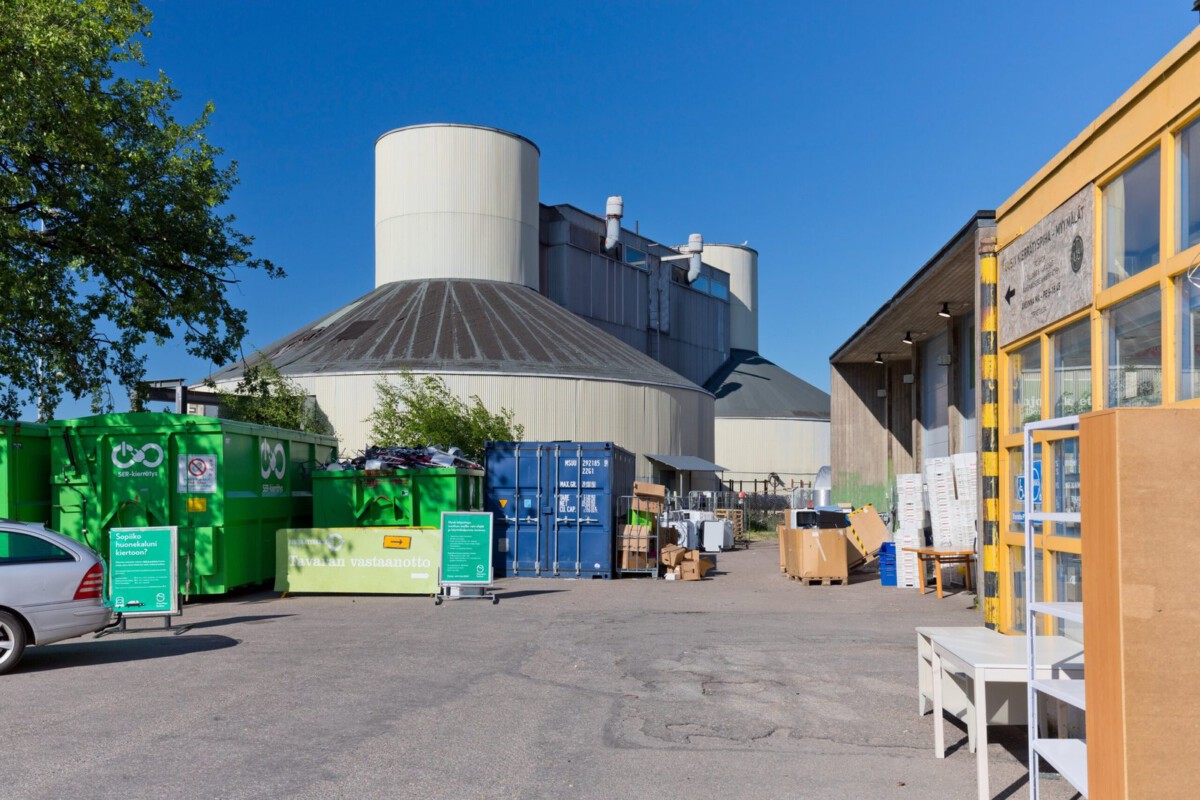Germany: The Relentless Recycling Champion

Germany stands out as the world’s undisputed recycling powerhouse, recycling about 67% of its waste as of 2025. The country’s secret weapon is the Green Dot program, which forces manufacturers to use eco-friendly packaging and take responsibility for its disposal. Almost every German household is familiar with the colorful bins lining their streets, each one for a different material. Schools teach kids the value of recycling early on, turning environmental care into a national habit. Advanced sorting facilities and smart technologies keep the process efficient and clean. The government hasn’t slowed down either, setting its sights on a 70% recycling rate by 2030. Germans take real pride in their recycling record—there’s even a bit of friendly competition between communities to see who recycles more. With such dedication, Germany’s streets rarely see litter, and its landfills are shrinking every year.
Sweden: Turning Trash Into Treasure

Sweden recycles about 50% of its waste and has become famous for making recycling almost effortless. What’s surprising is that less than 1% of Swedish household waste ends up in landfills. Instead, much of it is converted into energy through advanced incinerators, powering homes and heating buildings. The government has set an ambitious recycling target of 70% by 2025 and is well on its way. Swedish people separate their waste religiously, and recycling stations are everywhere—even in remote villages. Innovations like digital recycling maps and “smart” waste bins make it easy for people to do the right thing. The culture here is deeply rooted in the circular economy, where nothing is ever truly ‘waste.’ It’s a lifestyle, not just a policy, and it’s working wonders for the environment.
Austria: Meticulous Sorting and High Standards

Austria boasts a recycling rate of around 58% and is known for its strict rules when it comes to waste. Citizens are expected to sort their trash into several categories, and failing to do so can even result in fines. This level of detail helps keep contamination low, making recycling more effective and efficient. Austria’s investment in state-of-the-art recycling plants ensures that almost every recyclable item is processed correctly. Public campaigns keep recycling at the forefront of everyone’s mind, from busy urban centers to rural villages. The government is shooting for a 65% recycling rate by 2025, showing that it’s not content to rest on its laurels. People here take pride in their clean streets and green spaces, seeing them as a reward for their collective effort. Austria’s focus on reducing landfill use has set a benchmark for others in Europe.
South Korea: Tech-Savvy Solutions for a Cleaner Future

South Korea’s recycling rate has climbed to about 53%, thanks largely to its embrace of technology and strict regulation. The country is famous for its smart bins, which use sensors to monitor recycling habits and reward neighborhoods for good behavior. Government fines for improper recycling keep everyone on their toes, ensuring compliance is high. Public awareness campaigns are everywhere, from TV commercials to posters in subway stations. South Korea’s ambitious goal is to hit a 70% recycling rate by 2030, and investment in research is helping to make this a reality. The government works closely with businesses to develop new recycling methods, especially for tricky materials like electronics. Every year, new innovations emerge, making recycling faster and easier for everyone. This combination of tech and teamwork has earned South Korea its reputation as a leader in waste management.
Switzerland: Pay-As-You-Throw and National Pride

Switzerland’s recycling rate hovers at about 52%, driven by a unique “pay-as-you-throw” system. Residents must buy special bags for non-recyclable waste, giving them a financial incentive to recycle as much as possible. Recycling points are found everywhere, including apartment complexes and public parks, making it convenient for everyone. The Swiss government has set a 60% target for 2025, and local authorities offer rewards for neighborhoods that excel. Educational campaigns are a constant, reminding citizens of their environmental responsibilities. People in Switzerland often feel a deep sense of community pride when their town is recognized for its recycling efforts. The country’s clean streets and pristine lakes are a testament to the success of these programs. Switzerland’s careful management of waste has become a model for efficiency and civic engagement.
Netherlands: Masters of the Circular Economy

The Netherlands recycles about 50% of its waste, but what really sets it apart is its commitment to a circular economy. The Dutch have made “reduce, reuse, recycle” more than just a slogan—it’s at the heart of public policy and business strategy. The government aims for a 70% recycling rate by 2025 and encourages businesses to design products with recycling in mind. Recycling bins are color-coded and found everywhere, from city centers to countryside bike paths. Collaboration between the public and private sectors has produced innovative recycling plants that can handle everything from plastics to old mattresses. Citizens are actively involved in local recycling initiatives, often volunteering their time to keep neighborhoods tidy. Dutch schools teach sustainability as part of the core curriculum, ensuring the next generation keeps up the good work. The Netherlands’ approach shows how recycling can be woven seamlessly into everyday life.
Finland: Green Innovation and Community Spirit

Finland’s recycling rate is about 48%, and the country is quickly gaining ground thanks to a blend of innovation and strong community spirit. Finnish cities offer easy-to-access recycling centers where people can drop off everything from electronics to clothing. The government is pushing hard to reach a 60% recycling rate by 2030, investing in new technologies to make recycling even easier. Public awareness campaigns use humor and creativity to get people involved, often featuring well-known Finnish personalities. Collaboration between government, businesses, and citizens keeps ideas fresh and momentum high. Schools and workplaces both run programs to boost recycling rates, making it a true national effort. Finnish pride in their forests and lakes drives much of the recycling enthusiasm—it’s about protecting what they love. The result is a cleaner, greener country that’s making steady progress every year.
India: Urban Challenges and Informal Recycling

India’s recycling rate is about 30%, with enormous challenges stemming from rapid urbanization and limited formal recycling systems. Many Indian cities lack proper waste management infrastructure, leading to piles of garbage and overflowing landfills. The country relies heavily on informal waste pickers, who collect and sort recyclable materials by hand, often in dangerous conditions. Public awareness of recycling remains low, and education campaigns are only just beginning to make a difference. The Indian government has set a goal of 50% recycling by 2030, but achieving this will require massive investment in new facilities and technologies. Efforts are underway to formalize the recycling sector and provide better support for workers, but progress is slow. Rural areas are especially underserved, with almost no access to organized recycling at all. Until India can bridge these gaps, its recycling rates are likely to stay low.
France: Steady Progress with Ambitious Goals

France is making steady progress in recycling, with a current rate of around 45% and climbing. The country has implemented extended producer responsibility schemes, requiring companies to manage the lifecycle of their products, especially packaging. France’s government has set an ambitious goal of 65% recycling by 2035, with strong penalties for non-compliance. Public awareness campaigns are frequent, and schools teach recycling from a young age. Sorting bins are standard in public spaces, and cities like Paris have invested in high-tech recycling facilities. The French take pride in their clean cities and beautiful countryside, which motivates participation at every level. Collaboration between municipalities, private companies, and NGOs has driven innovation in waste management. France is determined to close the gap with Europe’s top recyclers over the next decade.
Japan: From Waste Problems to Recycling Success

Japan has transformed its approach to waste, with a recycling rate now at about 44%. The country’s strict waste separation rules can be daunting—households often sort waste into over ten categories. Local governments provide detailed guides, and social pressure ensures compliance. Japan has invested heavily in advanced recycling technologies, particularly for plastics and electronics. The government’s goal is to achieve a 60% recycling rate by 2030, and progress is being made year by year. Public awareness is high, and companies are encouraged to use recyclable materials and reduce packaging. Major cities like Tokyo run campaigns to keep recycling rates high, and many rural areas are catching up. Japan’s journey shows how cultural change and strict policies can turn a waste crisis into a recycling success story.








